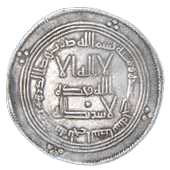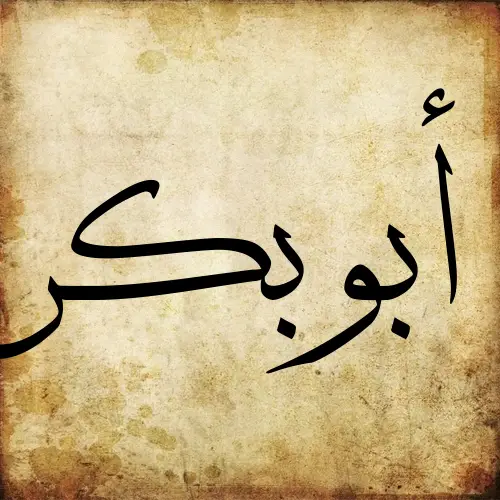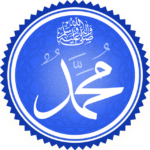Who was Abu Bakr?
Abu Bakr or Abdullah Ibn Abi Kuhafa (May Allah be pleased with him) was the best friend and father in law of the Prophet Muhammad (May peace be upon him) and was the first man to accept Islam. He was a rich merchant by trade and was well respected in the city of Makkah. He was the most knowledgeable of the companions of the Prophet (May peace be upon him) and the most respected after the Prophet. He was also the one who accompanied the prophet on the migration to Medina, where they both hid in a cave, due to the Quraish looking to persecute the Prophet. He was given the name ‘As Siddiq‘ which means the truthful.
His Appearance
Aisha ( May Allah be pleased with her) was asked to describe her father, Abu Bakr, she said: ‘A fair man, of slender build, thin cheeked and with a stoop; he could not
keep his lower garment from slipping over his loins; gaunt-faced, eyes deep-set, with a prominent forehead, and the backs of his hands fleshless. 1
Abu Bakr is appointed as Caliph
Upon the death of the Prophet ( May peace be upon him), the Companions were left wth a decision on who should be the next leader. It was unanimous that it should be Abu Bakr since he was the the best friend of the Prophet, the second in the cave, and most importantly, Abu Bakr was one the prophet chose the lead the prayers when he fell ill.
Ali Ibn Abi Talib ( May Allah be pleased with him ) did not oppose this consensus but it was delayed due Abu Bakr and Fatima Zahra ( May Allah be pleased with her), Ali’s Wife and the Prophets daughter, not seeing eye to eye in an issue of inheritance.2
Abu Bakr time as Caliph
The first feat of Abu bakr’s caliphate was the conquest of byzantine syria whose leader was Heraclitus at the time.This was a successful expedition led by Usamah bin Zayd.3 After the Prophets ( May peace be upon him) death, many hypocrites started to reveal themselves and had apostated from the religion and stopped paying the Zakat Tax. To stop this influence from spreading amongst the Muslims, Abu bakr consulted Usamah Bin Zayd who helped stop this from happening.As a result Islam was further strengthened in reputation across the Arab world.4 Another important decision he made was to preserve the Quran in written form. This came after a lot of Huffaz ( people who memorised the quran by heart) were killed in battle, Umar feared that this would result in the Quran being lost so he advised Abu Bakr to compile the Quran in written form5.
His illness and death
Abu Bakr ( May Allah be pleased with him ) fell ill with a fever when he was 63 years old, he did not go out to pray this lasted for 15 days until he passed away. Abdullah ibn Umar ( May Allah be pleased with him ) said “The cause of Abu Bakr’s death was the passing away of the Messenger of Allah, may Allah bless him and grant him peace. He was distressed and his body continued to waste away until he died.”6 He passed in 13AH and his reign lasted little over 2 years. He was buried in Aisha’s quarters ( May Allah be pleased with her ) next to the Prophet Muhammad ( May peace be upon him ).
“ If I were to take a Khalil, other than my Lord I would have taken Abu Bakr”
References
- Suyūṭī (1995) The history of the Khalifahs who took the right way : being a translation of the chapters on al-Khulafaʼ ar-Rashidun from Tarikh al-Khulafaʼ. Translated by A. Clarke. London: Ta-Ha Publishers, p. 8. Available at: https://www.muslim-library.com/dl/books/English_The_History_of_the_Khalifahs.pdf (Accessed: 8 February 2024). ↩︎
- Al Bouti, R. (2006) The jurisprudence of the prophetic biography : & A brief history of the Orthodox caliphate. Translated by N. Roberts. Damascus, Syria: Dar Al-Fikr, pp. 607–609. Available at: https://archive.org/details/fiqhussunnahbyshaykhramadanalbuti_202003/page/n565/mode/2up?view=theater (Accessed: 11 February 2024).
↩︎ - Al Bouti, R. (2006) The jurisprudence of the prophetic biography : & A brief history of the Orthodox caliphate. Translated by N. Roberts. Damascus, Syria: Dar Al-Fikr, pp. 607–609. Available at: https://archive.org/details/fiqhussunnahbyshaykhramadanalbuti_202003/page/n565/mode/2up?view=theater (Accessed: 11 February 2024) ↩︎
- Al Bouti, R. (2006) The jurisprudence of the prophetic biography : & A brief history of the Orthodox caliphate. Translated by N. Roberts. Damascus, Syria: Dar Al-Fikr, pp. 607–609. Available at: https://archive.org/details/fiqhussunnahbyshaykhramadanalbuti_202003/page/n565/mode/2up?view=theater (Accessed: 11 February 2024) ↩︎
- Suyūṭī (1995) The history of the Khalifahs who took the right way : being a translation of the chapters on al-Khulafaʼ ar-Rashidun from Tarikh al-Khulafaʼ. Translated by A. Clarke. London: Ta-Ha Publishers, pp. 64-65. Available at: https://www.muslim-library.com/dl/books/English_The_History_of_the_Khalifahs.pdf (Accessed: 8 February 2024). ↩︎
- Suyūṭī (1995) The history of the Khalifahs who took the right way : being a translation of the chapters on al-Khulafaʼ ar-Rashidun from Tarikh al-Khulafaʼ. Translated by A. Clarke. London: Ta-Ha Publishers, p. 69. Available at: https://www.muslim-library.com/dl/books/English_The_History_of_the_Khalifahs.pdf (Accessed: 8 February 2024). ↩︎
- Bukhārī, M. ibn I. (1997a) Ṣaḥīḥ Al-Bukhārī Vol 5. Darussalam, p. 15. Available at: https://drive.google.com/drive/folders/1vZs0NzB0jqtGCQgF_X4vIiMNdgNj1aVN (Accessed: 24 February 2024). ↩︎


